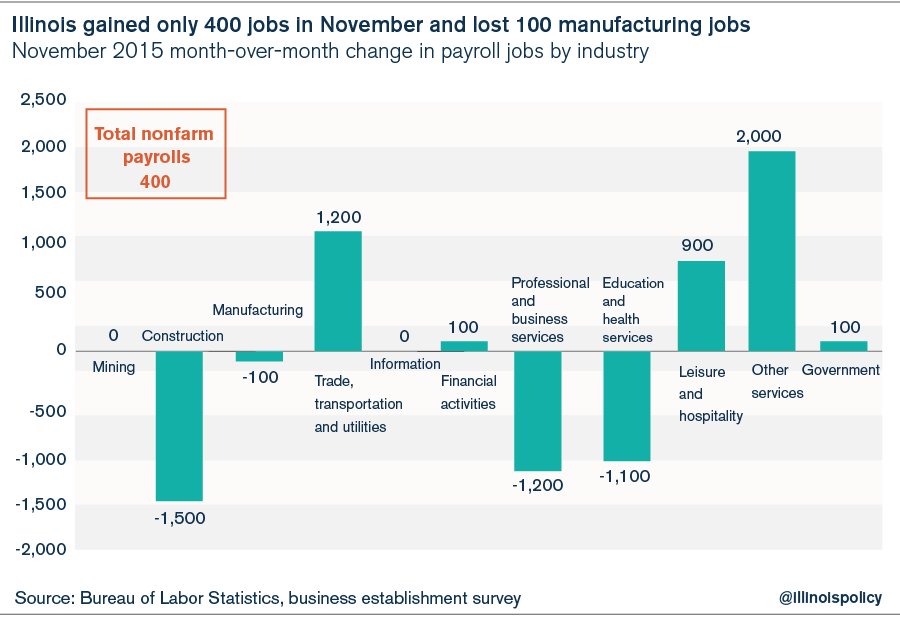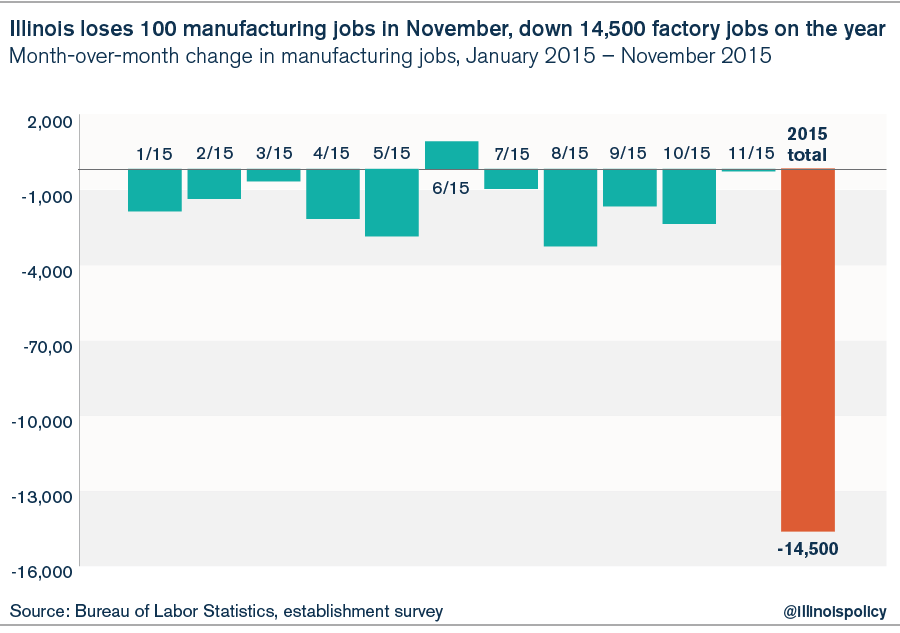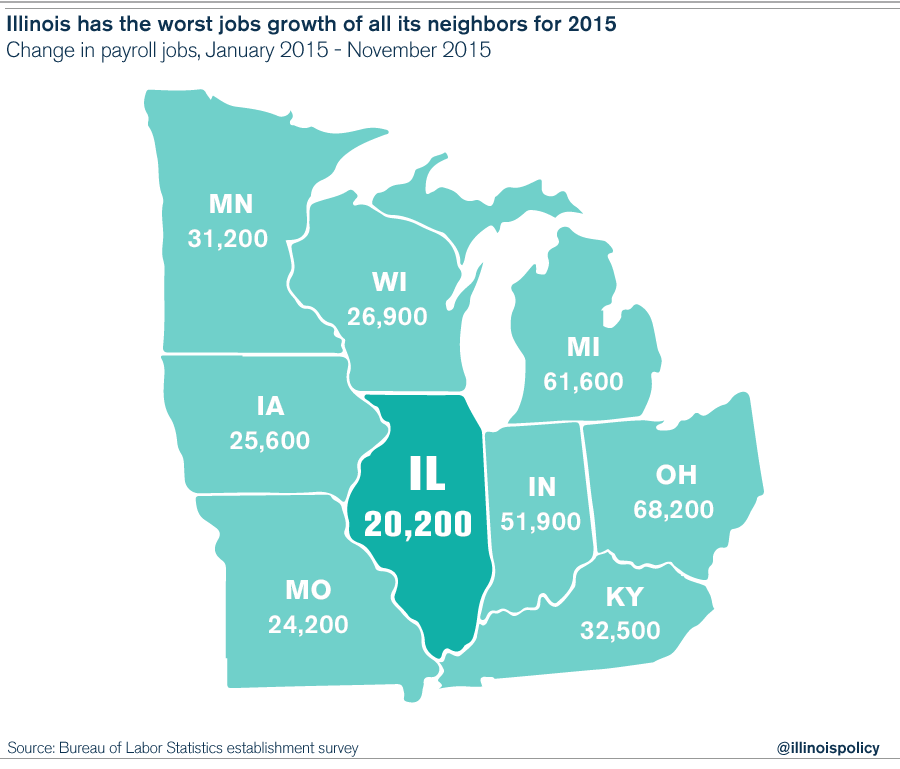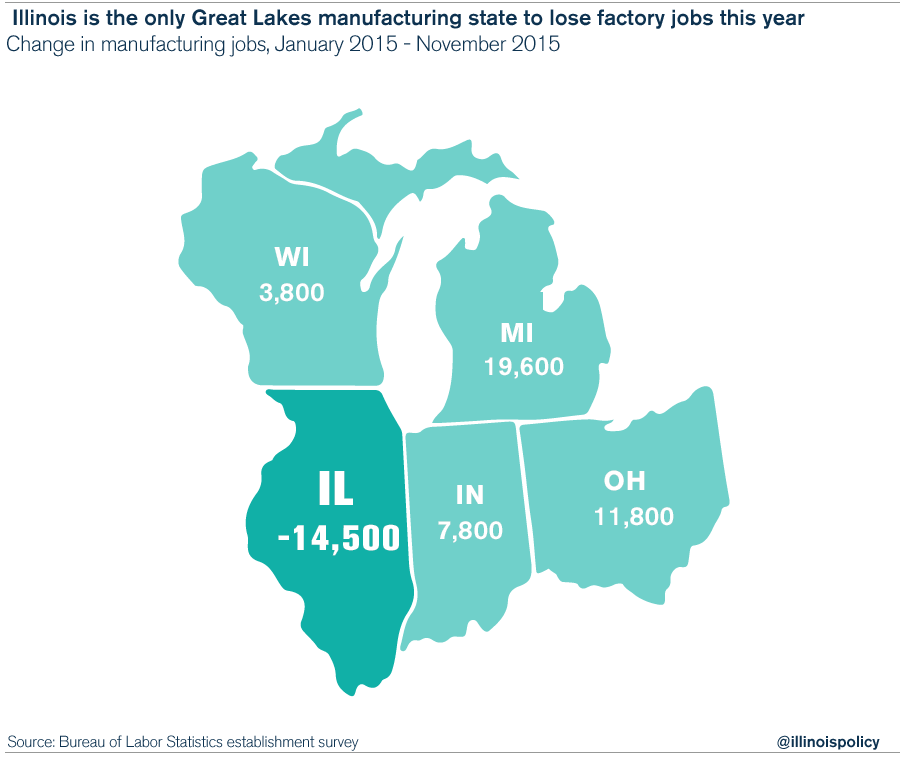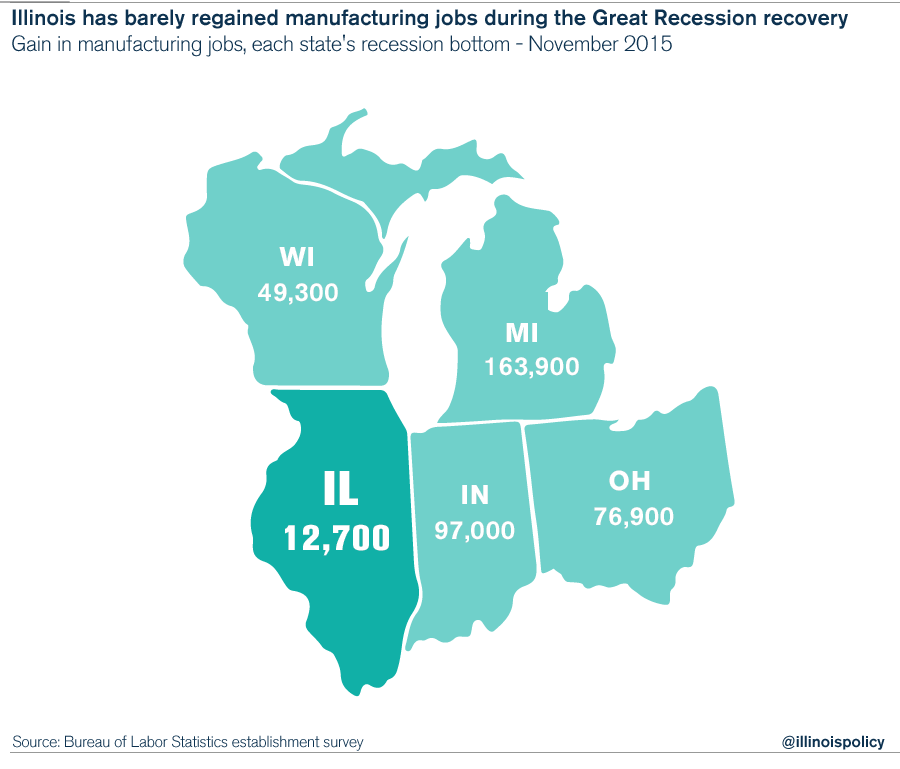Weak November jobs report for Illinois shows spike in unemployment
New federal data show Illinois gained only 400 jobs in November, and its unemployment rate rose to 5.7 percent.
Illinois’ November jobs report showed renewed labor-market weakness, with a meager net gain of 400 payroll jobs on the month, while the unemployment rate rose to 5.7 percent from 5.4 percent. The gain of 400 payroll jobs in November was offset by the downward revision of Illinois’ October jobs number by 400, leaving the state with no net jobs gain on the report. Illinois’ labor force grew, but the increased labor force was almost entirely accounted for by an increase in the number of people who are unemployed, according to new household survey data from the Bureau of Labor Statistics, or BLS.
Illinois’ 400 net jobs gain on the month was the result of some sectors gaining jobs and others losing jobs. Illinois gained payroll jobs in other services (+2000); trade, transportation and utilities (+1,200); leisure and hospitality (+900); financial activities (+100) and government (+100). Job losses came in construction (-1,500); professional and business services (-1,200); education and health services (-1,100); and manufacturing (-100) according to the November jobs report from the Illinois Department of Employment Security.
Illinois’ manufacturing slide continued with 100 jobs lost in November. In addition, Illinois’ October manufacturing jobs count was revised downward by 300, putting Illinois at -14,500 manufacturing jobs on the year.
The BLS household survey showed that Illinois’ workforce grew by 21,700 in November, driven by an increase in 18,200 Illinoisans who report being unemployed. The number of Illinoisans working also grew by 3,500 on the month. The significant increase in the count of unemployed Illinoisans drove the state’s unemployment rate to 5.7 percent from 5.4 percent.
The growth in Illinois’ labor force resulted in Illinois’ labor-force participation rate climbing to 64.8 percent in November from 64.6 percent in October.
Illinois still finds itself with a worst-in-the-nation recovery from the Great Recession. The BLS produces two surveys to measure labor markets in each state. The business establishment survey reveals that Illinois has the worst recovery in the nation, still down 67,000 jobs compared to before the recession. And according to the household survey, Illinois ranks second-worst in the U.S. with 176,000 fewer people working over the recession era.
Regional comparisons
Most states surrounding Illinois experienced moderate jobs growth in November, with Wisconsin showing significant job losses on the month. On the year-to-date comparison, Illinois’ smaller neighboring states have all outperformed the Land of Lincoln for jobs growth.
Illinois’ job-creating sectors have added a net 20,200 total jobs thus far in 2015, while Iowa has seen a net of 25,600 new jobs; Missouri, 24,200; Kentucky, 32,500; Wisconsin, 26,900; Indiana, 51,900; and Michigan, 61,600 new jobs on net for the first 11 months of 2015.
Illinois lost another 100 manufacturing jobs on net in November and had its October manufacturing jobs number revised downward by 300. Surrounding states generally shed manufacturing jobs on the month, although Michigan gained manufacturing jobs. Illinois has lost 14,500 manufacturing jobs on net during the first 11 months of 2015, compared with 3,800 such jobs gained in Wisconsin, 7,800 gained in Indiana, 11,800 gained in Ohio, and 19,600 gained on net in Michigan during this time. Combined, the other four Great Lakes manufacturing states have added a net of 43,000 manufacturing jobs in 2015, while Illinois has lost 14,500 on net.
Illinois’ terrible manufacturing performance this year is part of a longer-term trend. From the depths of the Great Recession, Illinois has added only 12,700 manufacturing jobs on net, compared with a net 49,200 factory jobs regained in Wisconsin; 78,600 in Ohio; 100,100 in Indiana; and 161,400 in Michigan.
Illinois’ overall jobs report was weak in November. With layoffs in Illinois’ manufacturing sector, the number of unemployed Illinoisans increased significantly, and the unemployment rate jumped by 0.3 percent on the month. Illinois’ jobs growth in all sectors is lackluster, leaving Illinois with the worst jobs growth compared with its surrounding states, even though it is the largest state among them.
The steady stream of manufacturing layoffs makes Illinois stand out compared with surrounding states. Illinois will not achieve economic strength until all sectors can provide new opportunities, manufacturing job losses finally come to a halt, and the production sector can start generating jobs again. Policy reforms should target Illinois’ manufacturing and industrial sectors, where the most economic pain and job losses are being felt. The three economic pieces of Gov. Bruce Rauner’s job-creation agenda are critical for manufacturing and industry. They include:
- Regulatory reform to fix Illinois’ broken workers’ compensation system, which drives manufacturing jobs out of the state
- Regulatory reform to fix the state’s anti-business lawsuit climate
- Tax and spending reform to freeze the nation’s second-highest property taxes and allow local governments to control budget costs
In addition, more home-rule municipalities should follow the lead of the village of Lincolnshire to enact local Right-to-Work ordinances. It’s taken decades to shape Illinois’ legal and regulatory system into one so harmful to blue-collar industries and working-class Illinoisans. Policy reforms should be supported and enacted at every level of government to put Illinois’ economy back on an even keel.

